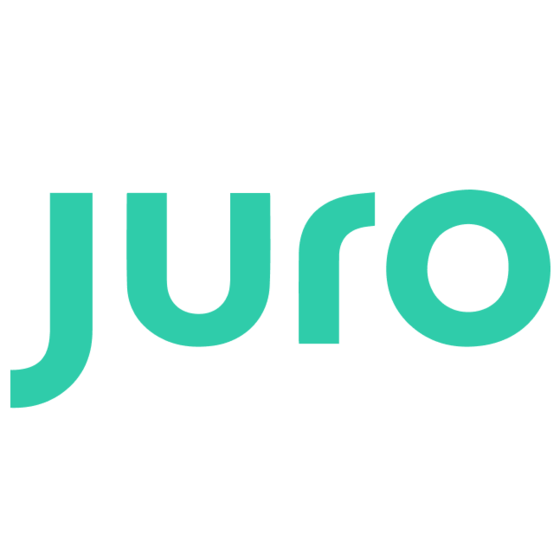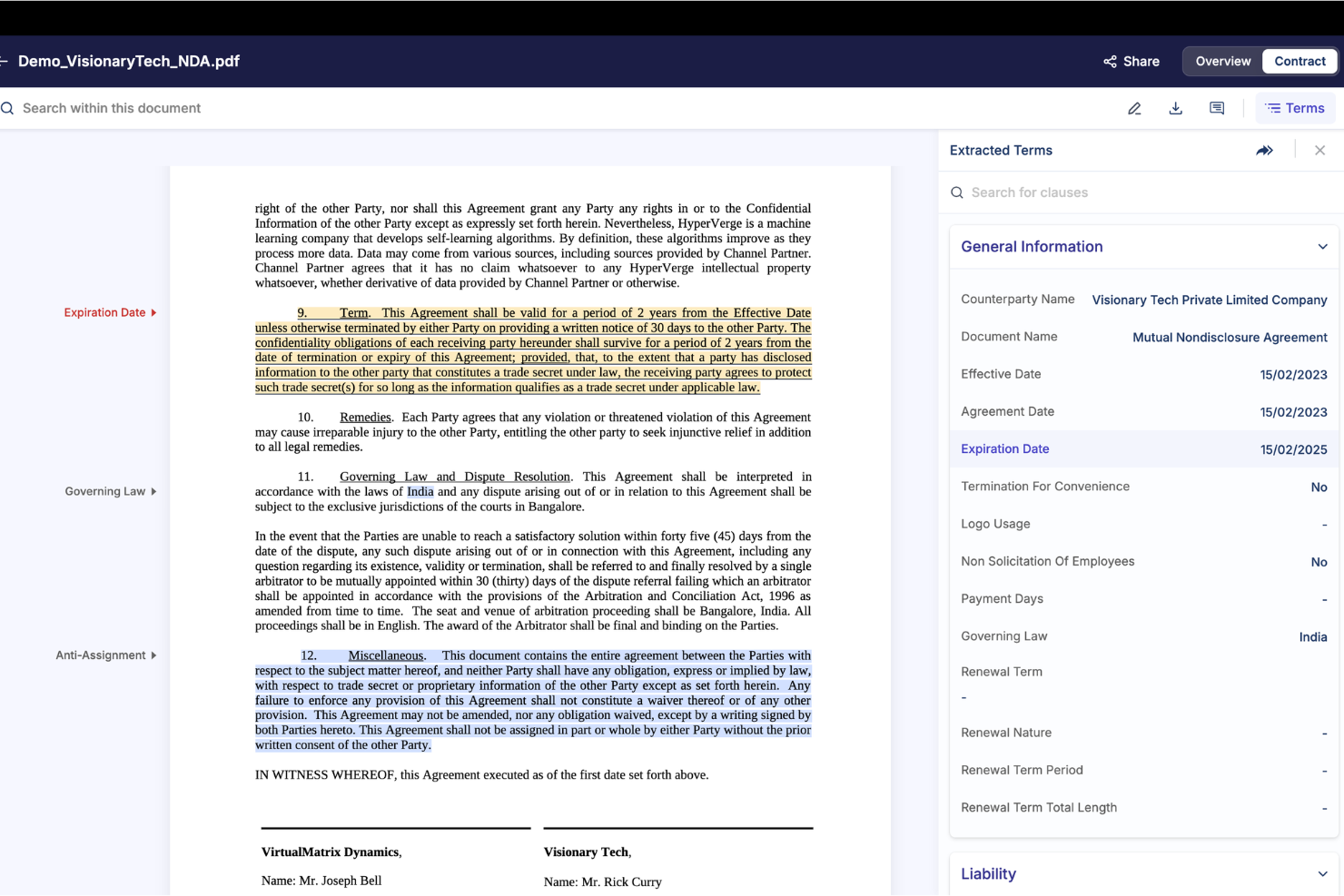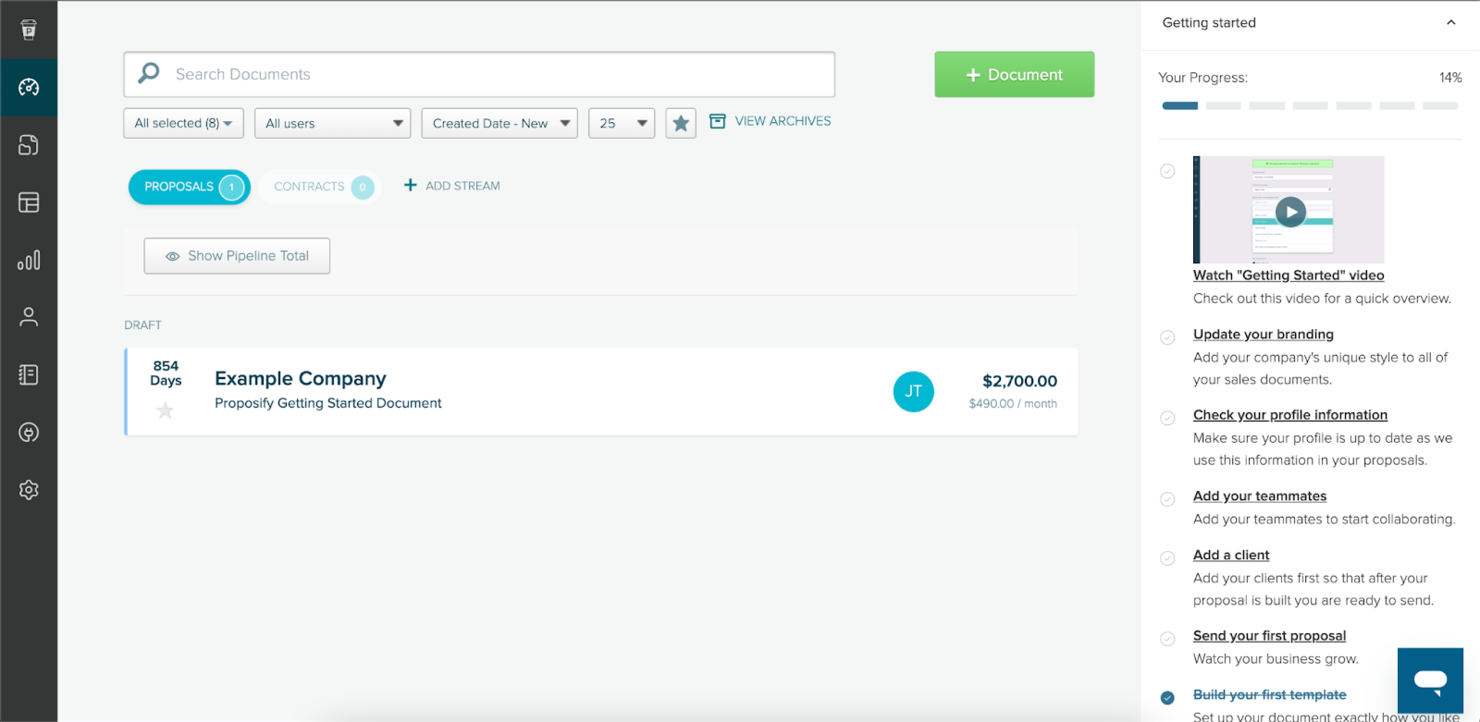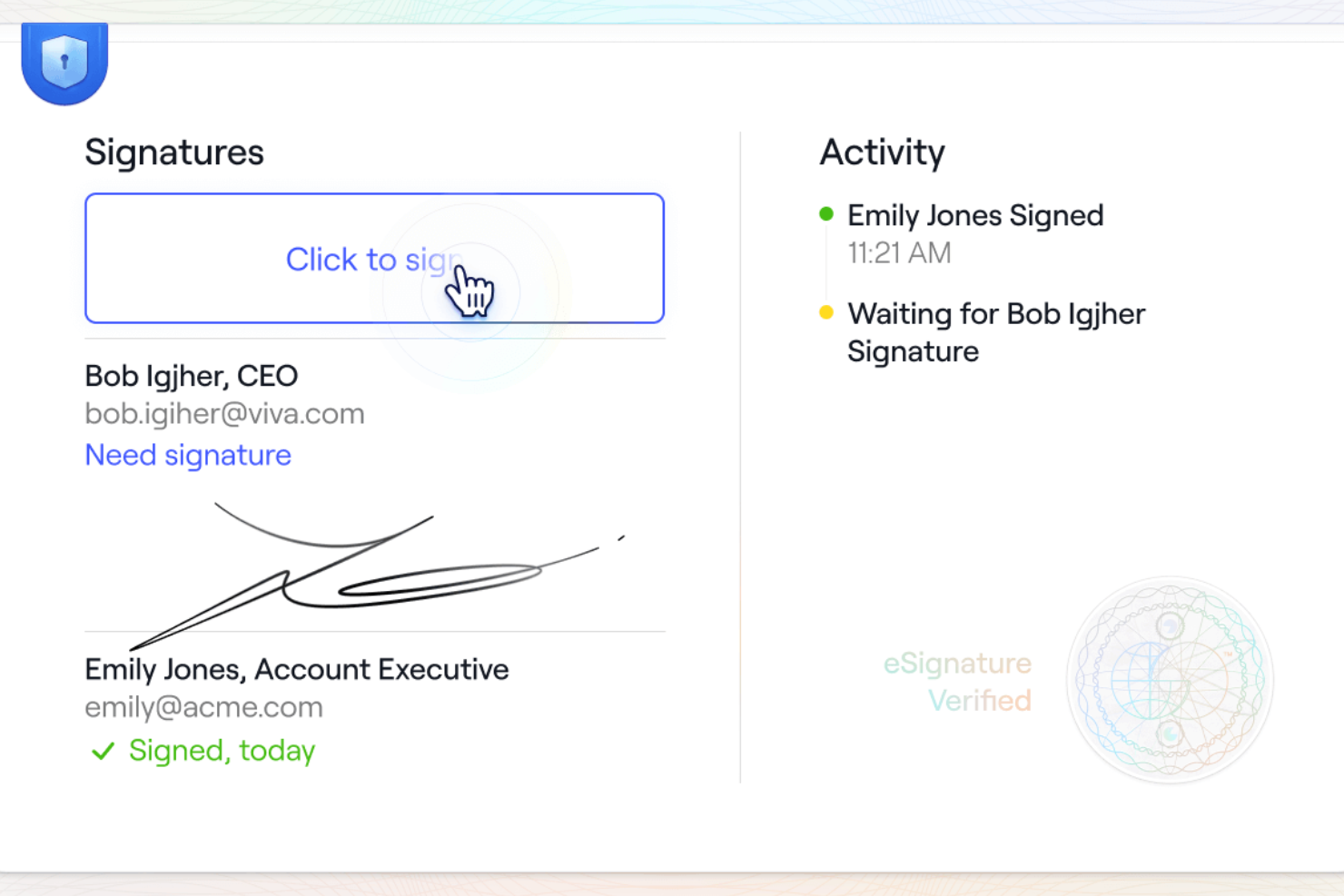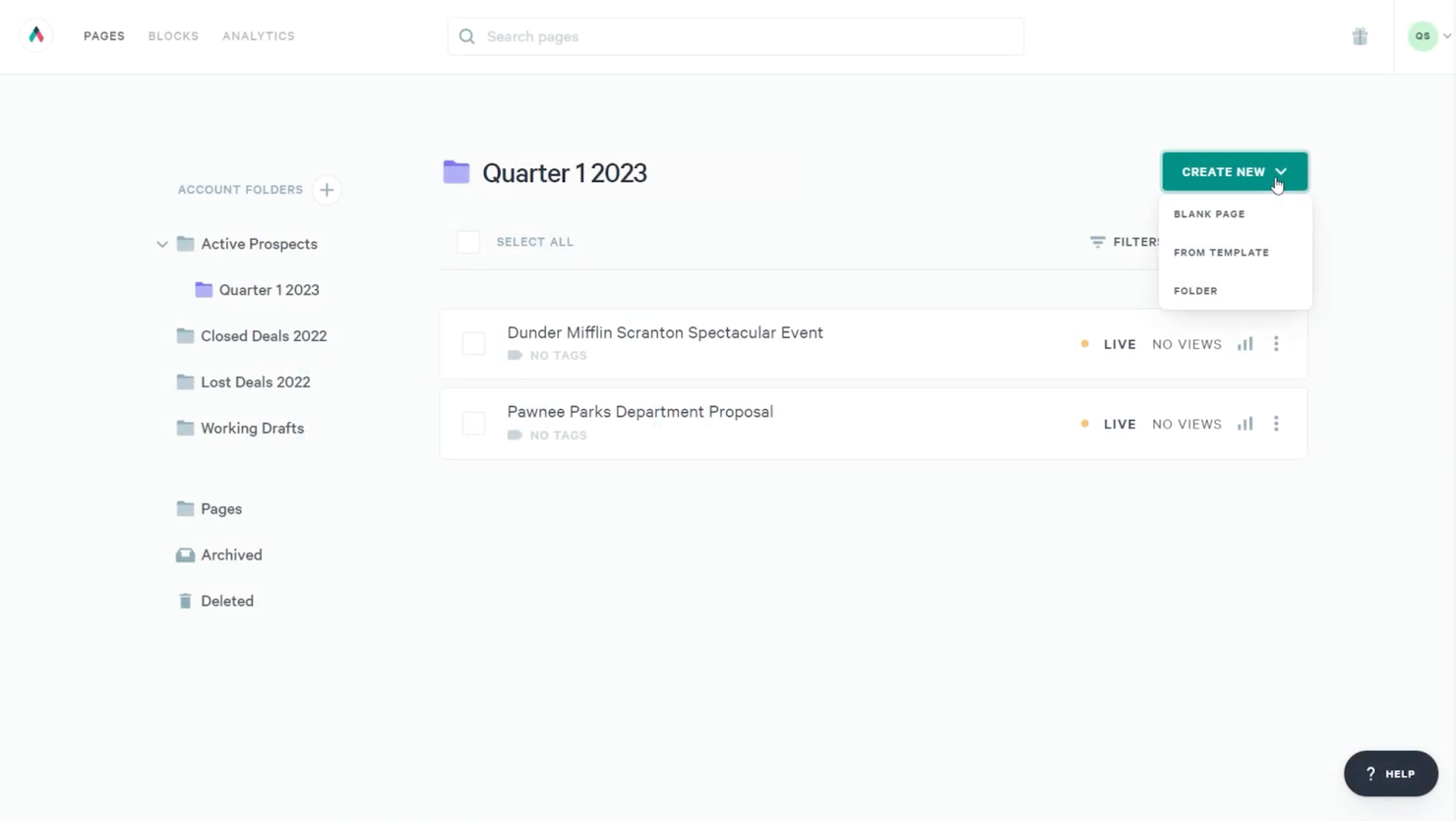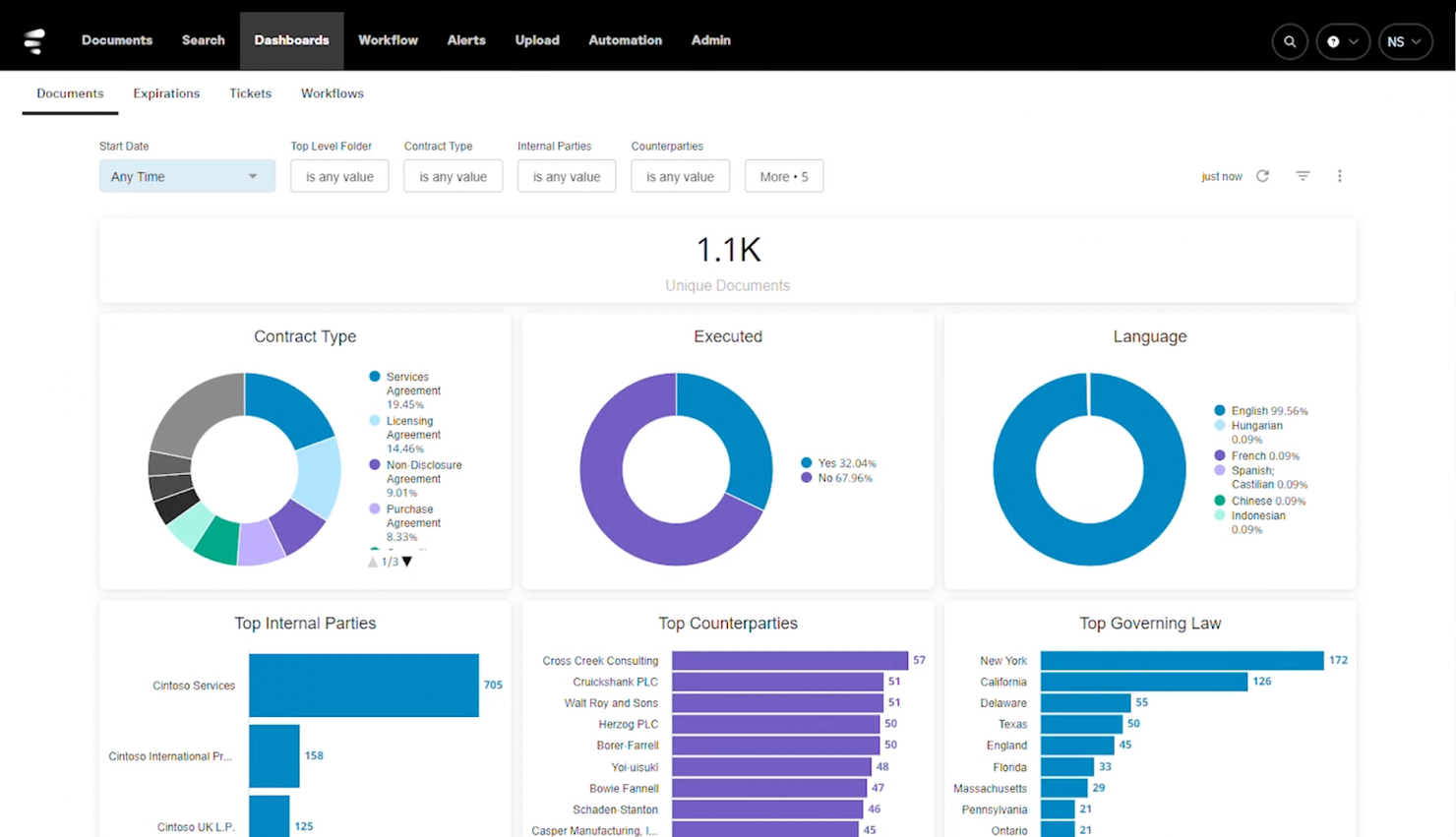10 Best Contract Management Software Shortlist
Here's my pick of the 10 best software from the 20 tools reviewed.
Our one-on-one guidance will help you find the perfect fit.
In 2024, the top contract management software solutions offer unparalleled efficiency and security for businesses of all sizes. Explore our comprehensive list to find the perfect tool that meets your needs and elevates your contract management processes.
Why Trust Our Contract Management Software Reviews?
We’ve been testing and reviewing contract management software since 2022. As revenue operation leaders ourselves, we know how critical and difficult it is to make the right decision when selecting software.
We invest in deep research to help our audience make better software purchasing decisions. We’ve tested more than 2,000 tools for different RevOps use cases and written over 1,000 comprehensive software reviews. Learn how we stay transparent & our contract management software review methodology.
Best Contract Management Software Summary
| Tool | Best For | Trial Info | Price | ||
|---|---|---|---|---|---|
| 1 | Best for global employment contracts | Free demo available | Flat rate user pricing, with a free version for businesses with up to 200 people | Website | |
| 2 | Best for automated contract workflows | Free demo available | From $1,245/month | Website | |
| 3 | Best for managing the contract lifecycle | Free demo available | Pricing upon request | Website | |
| 4 | Best for managing proposals and quotes | 14-day free trial | From $29/user/month (billed annually) | Website | |
| 5 | Best for tracking contract statuses | Free plan available | From $49/user/month | Website | |
| 6 | Best for a straightforward user interface | Free demo available | Pricing upon request | Website | |
| 7 | Best contract management software for sales teams | 14-day free trial | From $35/user/month (billed annually) | Website | |
| 8 | Best for international and multilingual contract management | 30-day free trial | From $10/user/month | Website | |
| 9 | Best AI-powered contract management software | Free demo available | From $20/user/month | Website | |
| 10 | Best for outstanding customer support | Free demo available | From $7/user/month (billed annually) | Website |
Best Contract Management Software Reviews
Below, I’ve outlined general overviews of each tool based on my selection criteria. Read on to understand how each tool stands out from other contract management software.
Deel is a platform that simplifies hiring and managing remote teams worldwide. It offers solutions for global payroll, compliance, and contract management, making it easier for businesses to engage talent across borders.
Why I picked Deel: One standout feature of Deel is its variety of contract types tailored to different working arrangements. You can choose from fixed-rate contracts, where a set amount is paid each pay cycle, pay-as-you-go contracts, which allow payments based on hours worked or tasks completed, and milestone contracts, enabling payments upon reaching specific project milestones. This flexibility lets you structure agreements that best fit your project's needs.
Another advantage is Deel's compliance support. The platform ensures that all contracts adhere to local labor laws and regulations, reducing the risk of legal issues when hiring internationally. This means you can focus on your business without worrying about navigating complex employment laws in different countries.
Deel Standout Features and Integrations
Features include customizable contract templates, mass contract updates, compliance monitoring, flexible payment options, multi-currency support, automated invoicing, expense tracking, time-off management, tax form assistance, worker verification letters, and 24/7 support.
Integrations include QuickBooks, Workday, UKG, SAP, Netsuite, Carta, Xero, Greenhouse, Slack, Microsoft Teams, Okta, and OneLogin.
Pros and cons
Pros:
- Provides 24/7 customer support
- Offers various contract types
- Ensures localized and compliant contracts
Cons:
- Could offer more customizability
- Limited to employment-related contracts
Gatekeeper is a cloud-based platform designed to help you manage contracts and vendor relationships effectively. It centralizes your contract data, providing clear visibility and control over your agreements.
Why I picked Gatekeeper: I like its AI extraction feature, which automatically pulls important data from your contracts. This means you can quickly access critical information without manual data entry. Additionally, Gatekeeper's Touchless Contracts technology allows for self-service contract creation and execution at scale, enabling your team to generate standard contracts without always needing legal department involvement.
Gatekeeper also offers a workflow engine that lets you digitize and automate your contract workflows, ensuring that each step follows your company's specific procedures. By automating routine tasks, your team can focus on more strategic activities, improving overall efficiency.
Gatekeeper Standout Features and Integrations
Features include smart forms, global search, employee portal, balanced scorecards, spend module, Market IQ, eSignatures, customizable dashboards, audit trails, and secure document storage.
Integrations include Microsoft Dynamics 365 CRM, Google Sheets, Slack, Microsoft Teams, Gmail, Microsoft Outlook, Xero, DocuSign, HubSpot, Microsoft Excel, and Jira Software Cloud.
Pros and cons
Pros:
- Good security and data privacy
- Centralized repository improves contract visibility
- Customizable workflows
Cons:
- The software can be complex to implement
- Pricing may be high for small businesses
HyperStart is an AI-first contract management platform designed to help businesses handle contract-related workflows more efficiently. Whether you're managing legal, sales, or procurement agreements, HyperStart gives you tools for drafting, approvals, and signatures.
Why I picked HyperStart: What makes HyperStart a good contract management software is its contract lifecycle management feature. This allows you to organize contracts from the initial request all the way through creation, execution, and renewal. You can set up workflows that match your company’s approval processes, and because it’s customizable, it fits into your existing operations without any friction. Plus, the audit trail feature means you’ll always know any action taken on the contract throughout its lifecycle. This includes, approvals, new version changes, data changes, and signature collections.
HyperStart also has a repository, which acts as a centralized hub for all your contracts. This makes it easy to search, store, and manage contracts, no matter how many documents you’re dealing with. The advanced search functionality allows you to filter by contract type, status, or renewal date.
HyperStart Standout Features and Integrations
Features include contract templates, real-time notifications, clause libraries, version control, user permissions, custom dashboards, key date tracking, integration with e-signature tools, automatic contract renewals, contract status tracking, and reporting tools.
Integrations include Gmail, Salesforce, Microsoft SharePoint, Google Drive, DocuSign, AdobeSign, One Drive, Slack, and Microsoft Outlook.
Pros and cons
Pros:
- AI-repository helps extract all standard clauses and other metadata
- AI-assisted contract review and redlining
- Template-based contract creation
Cons:
- Mobile capabilities are less robust than desktop
- Configuration to specific needs can be complex
Proposify is document management software for contract development and management. Users can create contracts using templates and have them signed with e-signatures.
Why I picked Proposify: Users can draft contracts using the customizable templates provided in the software or from scratch. The software auto-populates fields to speed up the drafting process and reduce manual errors. Approval workflows can be set up in the product with set editing and sending privileges and user permissions.
This platform is particularly suited to sales and marketing teams as it can also be used to draft and manage proposals and quotes. Sales teams can use the templates for quicker turnaround with client communications. Meanwhile, marketing teams can craft branded sales enablement collateral and pre-approved copy to be used across departments.
Proposify Standout Features and Integrations
Features include a content library, roles and permissions, customizable templates, custom branding and design, auto-populated fields, and approval workflows.
Integrations include Basecamp, Drift, FreshBooks, Gong, Harvest, HubSpot, Intercom, Olark, Pipedrive, QuickBooks, Salesforce, Stripe, and Zoho. Access additional integrations when you get a paid Zapier account.
Pros and cons
Pros:
- Templates are designed to be eye-catching and incorporate your branding
- Some fields are auto-populated and design assets are automatically added, saving time
- Users can centralize proposals, quotes, and contracts in the same software
Cons:
- Proposals are the centerpiece of the product, and have more features than contracts
- Getting comfortable with the editor can be a learning curve
Dock is a sales and onboarding software that offers various features to help sales teams guide customers through the buying journey, from initial interest to closing a deal and retention.
Why I picked Dock: As a contract management software, Dock centralizes all important documentation in its digital sales rooms, accessible to customers through personalized client portals. The platform offers templated forms, like quotes, proposals, contracts, and order forms to help standardize the sales process and provide a more unified customer experience.
Aside from easy-to-use templates for creating contracts and other documents, Dock also supports secure e-signatures directly within the platform, with features for providing signature reminders. Furthermore, Dock's order form analytics helps teams gain visibility into order form views and shares and helps track the status of different documents, whether they were viewed, signed, require approval, or are still in draft.
Dock Standout Features and Integrations
Features include engagement analytics, dynamic mutual action plans for smooth onboarding, custom branding, a flexible editor, and templates to help standardize processes like quotes, proposals, contracts, and client portal setup.
Integrations include Airtable, Dropbox, Google Slides, HubSpot, Loom, PandaDoc, Salesforce, Typeform, Vidyard, and Vimeo.
Pros and cons
Pros:
- Analytics to track order form statuses
- Digital sales room for centralized content management and communication
- Templated forms for quick quote, proposal, and order form creation
Cons:
- Order forms are an add-on
- HubSpot and Salesforce integration limited to higher-tier plans
Juro is contract automation software for contract creation, execution, and management purposes. Users can have contracts drafted, negotiated, and signed using the platform.
Why I picked Juro: Users can draft contracts and templates directly in the platform, or by uploading an existing document. Conditional logic and drag-and-drop fields can be used to customize a contract or template. The no-code workflow builder helps users create approval flows and track the progress of their contracts. Users can stay up-to-date on contract negotiations with split internal and external versions with comments, threads, and suggestions.
The platform has advanced e-signature capabilities with identity verification and the ability to sign from any device. Users can set multiple signatories with sequential logic, and audit trails of key actions help users keep up with the status of each contract. Reminders can be automated to ensure no steps are missed or skipped, and the searchable repository stores all contracts in one place.
Juro Standout Features and Integrations
Features include in-browser redlining, drag-and-drop fields, conditional logic, AI-driven OCR tagging, no-code workflow builder, split internal and external versions, e-signature on any divide, and identity verification.
Integrations include Gmail, Google Drive, Greenhouse, HubSpot, Salesforce, Slack, Webhooks, Workday, and a REST API. A paid Zapier account gives users access to additional integrations.
Pros and cons
Pros:
- Users can see when a contract has been viewed
- Highly customizable, so users can mold the tool to fit their needs
- User-friendly interface that’s easy to navigate and quick to learn
Cons:
- Once a contract has been sent, it can’t be updated and must be duplicated to edit
- Reporting tool has fewer features and options than some competitors
Qwilr is a sales automation and content management software with contracting, collateral, and buyer tracking capabilities.
Why I picked Qwilr: This platform goes beyond contract management to include sales automation and reporting and analytics features. Contract, proposal, and quote development can be automated with personalized variables like company names, contact details, and pricing information. E-signature, brand control, and permissions simplify contract management.
For sales teams looking to automate their processes and manage contracts and other collateral in one platform, this can be a great tool. Ready-made templates with drag-and-drop customization and an Unsplash image library make it easy for sales reps to design polished, branded collateral quickly. The tool’s buyer engagement tracking feature sends users real-time notifications on buyer actions.
Qwilr Standout Features and Integrations
Features include drag-and-drop collateral builder, template gallery, automated variables, custom API to pull data from other sources, and buyer activity insights.
Integrations include HubSpot, Pipedrive, QuickBooks, Salesforce, Slack, Stripe, and Zoho CRM. A paid Zapier account gives users access to additional integrations.
Pros and cons
Pros:
- Responsive and knowledgeable customer support team
- Highly adaptable and customizable content builder
- Live updates make reviewing documents and accessing the most up-to-date version easy
Cons:
- Product is catered to sales teams and may not deliver as much value to other departments
- Certain content blocks lack flexibility
DocuSign is a contract lifecycle management (CLM) software with automation features that speed up the process of generating, signing, and storing contracts.
Why I picked DocuSign CLM: Users can quickly produce contracts using the template and clause libraries and auto-population. Comments, notifications, and detailed version control facilitate the revision and negotiation process. A drag-and-drop editor and over 100 pre-configured workflow steps help users to design custom workflows for the contract lifecycle. All contracts are stored in a central repository with permission controls as well as search and filtering.
A standout feature of the software is that it can be used in over 180 countries, and it has 44 languages available for signers and 14 available for senders. The tool is suited to HR, legal, procurement, and sales teams and can be used across an organization to facilitate contract management. In addition to contract lifecycle management, the software offers digital notarization and identity verification functionality.
DocuSign CLM Standout Features and Integrations
Features include multiple language options, drag-and-drop workflow builder, template and clause libraries, auto-population, version control, permission controls, and a mobile app.
Integrations include Apple, Google, Microsoft, Oracle, Salesforce, SAP, Smart Communications, Stripe, Workday, and Zoom. Additional integrations can be accessed with a paid Zapier account.
Pros and cons
Pros:
- Friendly user interface with color coding and intuitive navigation
- Full visibility of the lifecycle stage and status of each contract
- Users can bundle multiple documents in a single ‘envelope’ for consolidated sending
Cons:
- Documents may be ‘canceled’ if signers fail to sign by the deadline
- Difficult to make updates and adjustments once a document is finalized and sent
Evisort is AI-powered contract management software with drafting, negotiation, automation, management, analytics, and reporting capabilities.
Why I picked Evisort: The artificial intelligence in this product helps users migrate their existing contracts and automate contract drafting and management based on data from their historical agreements. Users can populate a clause library using excerpts from their legacy contracts and establish automated best practices for new contracts, such as fallback language or standard terminology. Existing contracts can also be turned into templates for future use.
In addition to automated contract drafting, the software automates contract workflows, management, and reporting. Standardized request and review processes can be set in the tool for simplified contract lifecycle management, and AI-extracted contract data helps users easily search the contract repository. Users can develop reports on request trends, cycle times, and ticket volumes to understand their contract management efficacy.
Evisort Standout Features and Integrations
Features include AI-powered migration of existing contracts, template and clause libraries, workflow and approval processes, AI-powered search, and reporting.
Integrations include Adobe Sign, Amazon S3, Box, DocuSign, DropBox, Google Drive, Microsoft OneDrive, Microsoft SharePoint, Salesforce, and a custom API.
Pros and cons
Pros:
- Responsive and knowledgeable customer onboarding and support team
- Ability to search repositories based on document contents and keywords
- Migration of legacy agreements means users don’t have to start from scratch
Cons:
- Some elements of the tool have a learning curve
- Workflow logic configuration is less complex than some competitors
SpotDraft is contract management software with templates, workflows, a repository, reporting, and campaign management.
Why I picked SpotDraft: The software’s template feature allows users to create editable templates from scratch or from existing Word documents. Variables in an existing template can be turned into placeholders for easy personalization when it’s used in the future. The workflow feature can auto-assign tasks to specific users, and auto-signing can even be set up for certain basic, standardized contracts.
Users can store, search, and access contracts in the tool’s repository, with role-based access controls and automated report generation. The software also enables contract linking to connect relevant documents to one another, so they can all be tracked in a single view. Reporting can be done based on contract status, type, dates, users, or custom tags.
SpotDraft Standout Features and Integrations
Features include approval workflows, auto-assignment of tasks, auto-sign, role-based access, automated reporting, contract linking, customizable templates, and Microsoft Word plugin.
Integrations include Adobe Sign, BambooHR, Copper, DocuSign, Gmail, Google Drive, HubSpot, Jira, Lever, Pipedrive, QuickBooks, Salesforce, Slack, Xero, and Zoho.
Pros and cons
Pros:
- User interface is friendly and easy to navigate
- Product team is receptive to feedback and regularly ships new product features
- Customer support and onboarding team are responsive and knowledgeable
Cons:
- E-Stamp Paper is not currently supported but is required in some states
- Product is still new and lacks certain features that competitors offer
Other Contract Management Software
Didn’t find the perfect match in the overviews above? Here are a few more contract management software that didn’t make the shortlist:
- Oneflow
For creating a more personalized experience
- PandaDoc
For all-around document management
- Ironclad
For managing contracts across company departments
- LinkSquares
For digitizing existing contracts
- SignNow
For secure eSignature workflows
- CobbleStone Contract Insight
For enterprise-level management
- Contractbook
For automated workflows
- ContractSafe
For high-security standards and compliance
- Concord
For collaborating with external contributors
- Contract Logix
For healthcare and pharmaceutical companies
Related Contract Management Software Reviews
If you still haven't found what you're looking for here, check out these tools closely related to contract management software that we've tested and evaluated.
- CRM Software
- Sales Software
- Lead Management Software
- Business Intelligence Software
- Revenue Management System
- CPQ Software
Selection Criteria For Contract Management Software
Selecting the ideal contract management software is a critical task that directly impacts an organization's ability to streamline contract processes, mitigate risks, and enhance revenue operations. Through personal trials and extensive research into these tools, I've distilled a comprehensive evaluation framework that balances functionality with specific user needs and operational challenges. Effective contract management software not only simplifies the creation, negotiation, and storage of contracts but also ensures compliance and facilitates easy access to contractual documents.
Core Contract Management Software Functionality: - 25% of total weighting score
To be considered for inclusion on my list of the best contract management software, the solution had to support the ability to fulfill common use cases:
- Streamlining the contract creation process using templates
- Managing contract approvals and revisions efficiently
- Tracking contract performance and compliance
- Automating reminders for key contract milestones and expirations
- Facilitating secure and legally binding electronic signatures
Additional Standout Features: - 25% of total weighting score
Beyond the basics, the following features distinguish superior contract management solutions:
- Advanced AI for contract analysis and risk assessment
- Robust integration with CRM and ERP systems for seamless data flow
- Granular role-based access control for enhanced security
- Comprehensive contract lifecycle analytics for strategic insights
- Blockchain integration for immutable contract storage and verification
Identifying these features helps pinpoint contract management software that offers more than just document management, providing tools that add value through every phase of the contract lifecycle.
Usability: - 10% of total weighting score
Ease of use is paramount for ensuring high adoption rates:
- Intuitive user interface that minimizes the learning curve
- Customizable dashboards tailored to different user roles
- Mobile compatibility for contract management on the go
- Drag-and-drop functionality for easy document handling
Onboarding: - 10% of total weighting score
The transition to a new contract management system should be smooth:
- Detailed training materials and online tutorials
- Interactive onboarding sessions or product tours
- Responsive customer support during the initial setup phase
- Community forums for peer advice and best practices
Customer Support: - 10% of total weighting score
Quality customer support is essential for ongoing success:
- Availability of support across multiple channels
- Timely and helpful responses to inquiries
- Proactive assistance with software updates and new features
- Access to a comprehensive knowledge base for self-help
Value For Money: - 10% of total weighting score
Evaluating cost-effectiveness is crucial:
- Transparent pricing without hidden fees
- Scalable plans that grow with your business needs
- Free trials or demos to assess the software's fit
- Clear ROI through time savings and efficiency gains
Customer Reviews: - 10% of total weighting score
Feedback from existing users provides valuable insights:
- Positive experiences with the software's functionality and usability
- Stories of how the tool has improved contract management processes
- Constructive criticism and the provider's responsiveness to feedback
By applying these criteria, I guide software buyers towards selecting a contract management solution that not only meets their immediate needs but also supports strategic objectives in revenue operations and risk management. The right software should enhance operational efficiency, ensure compliance, and provide actionable insights into contract performance.
How To Choose Contract Management Software
With so many different contract management software solutions available, it can be challenging to make decisions on what tool is going to be the best fit for your needs.
As you're shortlisting, trialing, and selecting contract management software, consider the following:
- What problem are you trying to solve - Start by identifying the contract management software feature gap you're trying to fill to clarify the features and functionality the tool needs to provide.
- Who will need to use it - To evaluate cost and requirements, consider who'll be using the software and how many licenses you'll need. You'll need to evaluate if it'll just be the revenue operation leaders or the whole organization that will require access. When that's clear, it's worth considering if you're prioritizing ease of use for all or speed for your contract management software power users.
- What other tools it needs to work with - Clarify what tools you're replacing, what tools are staying, and the tools you'll need to integrate with, such as accounting, CRM, or HR software. You'll need to decide if the tools will need to integrate together or if you can replace multiple tools with one consolidated contract management software.
- What outcomes are important - Consider the result that the software needs to deliver to be considered a success. Consider what capability you want to gain or what you want to improve, and how you will be measuring success. For example, an outcome could be the ability to get greater visibility into performance. You could compare contract management software features until you’re blue in the face but if you aren’t thinking about the outcomes you want to drive, you could be wasting a lot of valuable time.
- How it would work within your organization - Consider the software selection alongside your workflows and delivery methodology. Evaluate what's working well and the areas that are causing issues that need to be addressed. Remember every business is different — don’t assume that because a tool is popular that it'll work in your organization.
Trends In Contract Management Software For 2024
Contract management software continues to evolve, driven by the need to streamline operations, enhance compliance, and optimize revenue operations. The latest developments in the field reflect a broader trend towards automation, integration, and intelligent analytics. These advancements aim to address the complex challenges faced by revenue operation leaders, such as reducing contract cycle times, ensuring legal compliance, and maximizing contract value. Here's a look at the key trends shaping the future of contract management software:
Advanced Automation and AI
- AI-Powered Contract Analytics: The introduction of AI and machine learning algorithms for analyzing contract terms, identifying risks, and suggesting optimizations.
- Evidence: Tools now offer predictive insights into contract performance, highlighting potential issues before they impact revenue operations.
- Automated Contract Creation and Workflows: Enhanced automation capabilities for generating contracts using templates and managing approval workflows without manual intervention.
- Evidence: Users report significantly reduced contract cycle times and improved accuracy in contract drafting.
Seamless Integration Capabilities
- CRM and ERP Integration: Tighter integration with CRM and ERP systems to ensure that contract data flows seamlessly across business operations.
- Evidence: Businesses experience improved data consistency and visibility, facilitating better decision-making and forecasting.
- Blockchain for Contract Security and Verification: Utilization of blockchain technology for secure contract storage and verification, enhancing trust and transparency in contract execution.
- Evidence: Emerging contract management platforms are adopting blockchain to offer immutable audit trails.
Enhanced User Experience and Accessibility
- Mobile Access and User-Friendly Interfaces: Development of mobile applications and user-friendly web interfaces that allow users to manage contracts on the go.
- Evidence: Increased user adoption rates and positive feedback on ease of use from mobile platforms.
Shifting Feature Priorities
- Decline in Manual Data Entry Features: A move away from features focused on manual data entry as automation and data integration capabilities become more advanced.
- Evidence: Users favoring solutions that offer comprehensive data import and synchronization over traditional manual entry.
These trends indicate a significant shift towards making contract management software more intelligent, integrated, and user-friendly, with a strong emphasis on automating routine tasks and providing strategic insights. As contract management technology continues to advance, revenue operation leaders should focus on selecting tools that align with these trends to maximize their organization's operational efficiency, compliance, and revenue potential.
What Is Contract Management Software?
Contract management software is a tool that assists organizations in managing the life cycle of contracts. This software streamlines processes involved in creating, executing, and monitoring legal agreements and documents. It provides a centralized platform for storing contracts, automating workflows, tracking compliance, and managing renewals. These tools are used across various industries for efficient handling of contractual obligations and documentation.
The benefits of using contract management software include improved efficiency in managing contracts, from drafting to completion. It helps ensure compliance with legal requirements and organizational standards, reducing the risk of penalties and mismanagement. The software provides timely alerts for critical dates like renewals and deadlines, aiding in proactive contract administration. Additionally, it offers enhanced visibility and control over contract processes, making it easier to access and analyze contract data. This leads to better decision-making, cost savings, and optimized operational performance. By automating routine tasks, the software also frees up resources, allowing staff to focus on more strategic activities.
Features Of Contract Management Software
Having the right contract management software is indispensable. Such software not only streamlines the contract lifecycle but also ensures that every agreement is optimized for maximum revenue generation and compliance. To effectively manage revenue operations, certain features in contract management software stand out as critical. These features ensure that contracts contribute positively to the financial health and operational efficiency of an organization.
- Centralized Contract Repository: Stores all contracts in a single, searchable database. This centralization makes it easier to manage and access contracts, ensuring that revenue opportunities are fully leveraged and compliance risks are minimized.
- Automated Workflow Management: Streamlines the contract lifecycle with automated workflows. Automating processes like approvals and renewals accelerates the contract lifecycle, reducing bottlenecks that can delay revenue recognition.
- Advanced Analytics and Reporting: Provides insights into contract performance and obligations. Analytics help identify trends and performance metrics, crucial for making informed decisions that affect revenue operations.
- Electronic Signature Integration: Facilitates the execution of contracts with legally binding e-signatures. Speeding up the contract signing process directly impacts the speed at which revenue can be realized from agreements.
- Contract Renewal Alerts: Sends notifications for upcoming renewals and expirations. Timely reminders ensure that revenue-generating opportunities are not lost due to overlooked contract renewals.
- Customizable Contract Templates: Offers pre-designed templates for common contract types. Templates standardize the contract creation process, reducing errors and ensuring consistency across agreements that impact revenue.
- Risk Management Tools: Identifies and assesses contract risks. By highlighting potential risks before they become issues, businesses can safeguard their revenue streams and ensure compliance.
- Integration Capabilities: Seamlessly connects with CRM, ERP, and other business systems. Integration ensures that contract data supports wider business processes, enhancing overall revenue operations.
- Access Controls and Permissions: Manages who can view, edit, or approve contracts. This feature protects sensitive information and ensures that contract processes are carried out by authorized personnel only.
- Audit Trails: Tracks changes and actions taken on contract documents. Audit trails provide transparency and accountability, essential for compliance and managing disputes that could impact revenue.
Selecting contract management software with these features equips organizations to effectively manage their contracts, from creation through execution and renewal. The right software not only streamlines administrative tasks but also provides strategic insights, helping businesses maximize their revenue potential and maintain compliance. By focusing on these critical features, revenue operation leaders can ensure they choose a solution that supports their objectives and contributes to the organization's success.
Benefits Of Contract Management Software
Contract management software is a vital tool for streamlining processes, enhancing efficiency, and securing profitability. This software not only simplifies the management of contracts but also brings a host of benefits critical for any organization aiming to optimize its contract lifecycle and revenue operations. Here are five primary benefits that contract management software provides to users and organizations:
- Increased Efficiency: Automates and streamlines the contract lifecycle. By reducing the time and effort required for manual contract management tasks, organizations can focus more on strategic activities that drive revenue growth.
- Improved Compliance: Ensures adherence to legal standards and corporate policies. This software helps businesses minimize risk and avoid penalties by keeping contracts in compliance with internal and external regulations.
- Enhanced Visibility: Provides a centralized view of all contracts. Having all contracts stored in one place and easily accessible improves oversight and management, ensuring that no opportunities for revenue are missed due to mismanagement of contracts.
- Risk Reduction: Identifies and mitigates potential contract risks. By highlighting areas of concern within contracts, software helps prevent disputes and losses that could negatively impact the organization's financial health.
- Better Decision Making: Offers insights and analytics on contract performance. This feature allows organizations to make informed decisions based on the analysis of contract data, leading to more strategic operations and revenue optimization.
Costs & Pricing for Contract Management Software
Choosing the right contract management software is crucial for organizations aiming to streamline their contract processes, enhance efficiency, and secure compliance. The market offers a variety of software options, each with its own set of features, capabilities, and pricing models designed to meet the needs of different business sizes and sectors. Understanding the various plan options available is key to selecting a software solution that not only fits your current requirements but also scales with your business's growth. Below is an overview of typical plan options and pricing for contract management software.
Plan Comparison Table For Contract Management Software
| Plan Type | Average Price | Common Features Included | Best For |
|---|---|---|---|
| Free option | $0 | - Basic contract storage and management - Minimal user access | - Individuals and freelancers - Small teams with limited budgets |
| Basic | $10 - $25 per user/month | - Core contract management features - Contract creation and storage - Basic reporting | - Small businesses -Startups |
| Professional | $50 - $100 per user/month | - Electronic signatures - Workflow automation - Integration with other business systems | - Medium-sized businesses - Growing companies |
| Enterprise | $100+ per user/month | - AI analytics - Advanced security options - Full customization capabilities | - Large enterprises - Businesses with complex needs |
When evaluating contract management software options, consider not just the upfront cost but also the value each plan offers in terms of features, scalability, and support. A plan that closely aligns with your business needs and growth projections will ensure that you invest in a solution that delivers both immediate benefits and long-term value.
New & Noteworthy Product Updates
Below, you’ll find our release notes and take on the latest and greatest contract management software product updates. Discover what’s now possible through feature releases, improvements, and updates on web, desktop and mobile apps. Learn what’s new, if it’s hot—or not, and why it matters for contract management.
April 2024: Contract Management Software Updates
Here are some April update highlights.
signNow Update Notes
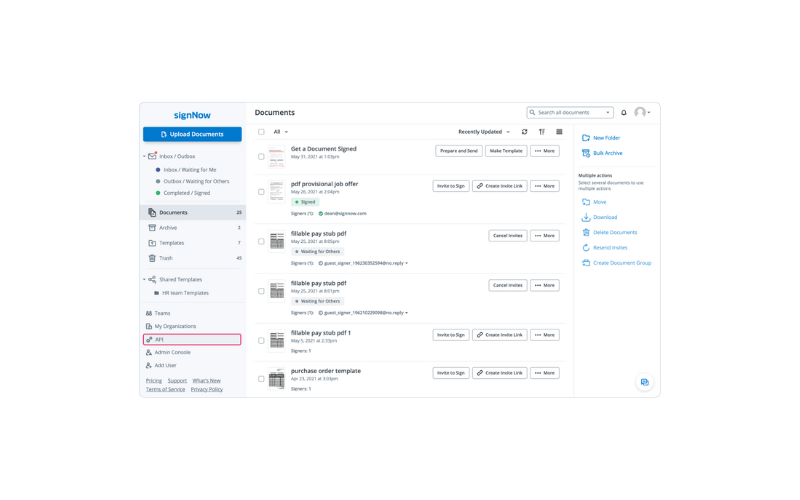
signNow has recently introduced new endpoints that allow users to create multiple brands for a single Organization. This update provides greater flexibility and customization options for organizations using the SignNow platform.
With this update, if a user is part of an Organization, they can now apply their personal brands as well as the brands associated with their Organization. This means that users can tailor the branding and visual identity of the SignNow platform to better align with their organization's specific needs and preferences.
The ability to manage multiple brands within a single Organization is a valuable addition to the SignNow platform. It enables organizations to maintain a consistent and cohesive brand identity across all their electronic signature activities, while also allowing individual users to personalize their experience. This update enhances the overall flexibility and customization capabilities of the SignNow software, making it an even more powerful tool for businesses and teams of all sizes.
Verdict: Hot! This update should be very useful for most organizations.
Proposify Update Notes
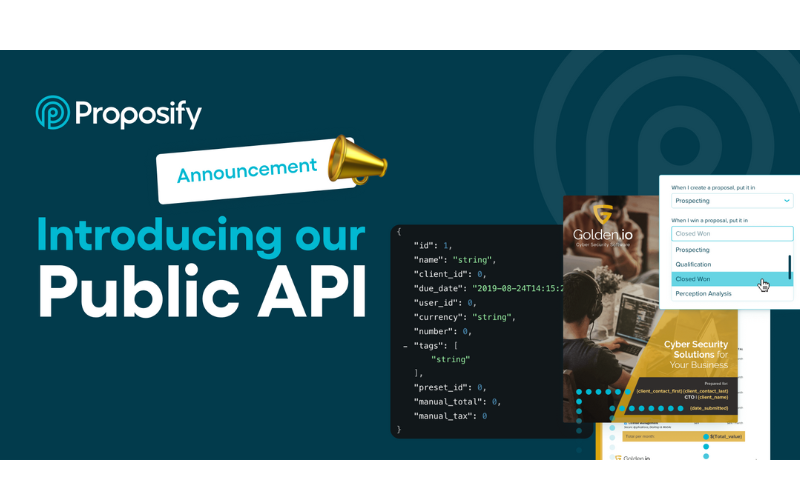
In April 2024, Proposify announced a significant enhancement to its platform with the launch of its new public API. This update marks an important step in Proposify's evolution, expanding its capabilities and integrating more seamlessly with various tools and systems that businesses commonly use. The introduction of the API is designed to make Proposify more adaptable and powerful in managing proposal workflows, reflecting the company's commitment to improving user experience and functionality.
The new public API from Proposify allows developers to integrate Proposify's proposal management features into their own custom applications and workflows. This means that users can now automate more tasks, synchronize data between Proposify and other systems, and create a more cohesive experience across their sales and proposal management tools. For example, it enables the automatic creation of proposals triggered by events in a CRM system or custom applications, enhancing efficiency and reducing manual entry errors.
The value of this update to users lies in its potential to streamline their processes and reduce the time spent on proposal management. By enabling a deeper integration of Proposify with other tools, businesses can leverage their existing technology investments more effectively, ensuring that their sales teams focus more on strategy and less on administrative tasks. This API launch could significantly impact how teams collaborate and manage client engagements, potentially leading to faster proposal turnaround times and higher conversion rates.
Verdict: Hot! This update is a game changer for Proposify users.
Juro Update Notes
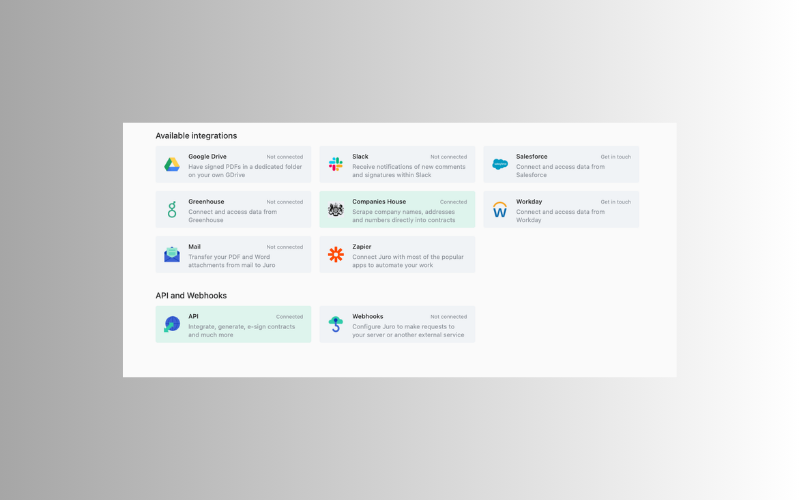
In 2024, Juro made significant enhancements to its platform by expanding its integration capabilities, now supporting over 6000 tools. This update is designed to streamline and enhance contract management processes by allowing deeper and more seamless integration with a wide range of business systems. By doing so, Juro aims to create a more connected and efficient workflow environment, facilitating easier data synchronization and workflow customization across various business tools and platforms.
The deep integration capabilities introduced by Juro enable users to connect their contract management operations directly with other essential business systems, such as CRM platforms, accounting software, and HR systems. This means that users can initiate, manage, and analyze contracts directly from within their existing tools, without the need to switch between multiple platforms. Such integration not only saves time but also reduces the likelihood of errors associated with manual data entry and helps maintain data consistency across systems.
For users, the value of these enhanced integration capabilities lies in the significant efficiency gains and the potential for improved data accuracy. By integrating Juro with other business tools, organizations can automate routine tasks, enhance data visibility, and ensure that key contract information is easily accessible and always up-to-date. This holistic approach to contract management supports better decision-making and can lead to faster contract cycles, ultimately contributing to improved business outcomes.
Verdict: Hot! Juro users can only benefit from such a big increase in integrations.
Qwilr Update Notes
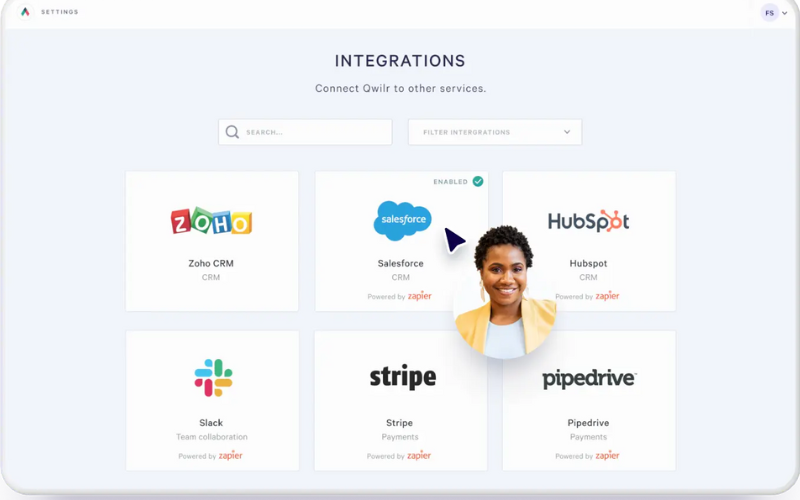
In 2024, Qwilr introduced a significant update to its platform with an expanded range of integrations, enhancing its compatibility with leading CRM, sales, and accounting software. This development marks a strategic enhancement designed to streamline the workflow between Qwilr and other critical business systems such as HubSpot, Salesforce, and QuickBooks. By facilitating a more seamless integration with these platforms, Qwilr aims to reduce the complexity and improve the efficiency of managing sales processes and documentation.
The integration expansion allows users to directly connect their Qwilr projects with their CRM and accounting systems, enabling automatic data synchronization and activity logging. This means that actions taken within Qwilr, such as proposal submissions or updates, are instantly reflected in the linked systems. For sales teams, this integration means that proposal data can flow directly into their sales pipelines in Salesforce or HubSpot, providing up-to-date information at every stage of the sales cycle.
For Qwilr users, the value of these expanded integrations lies in the significant time savings and reduced potential for data entry errors. By automating data transfers between systems, sales teams can spend less time on administrative tasks and more time engaging with clients. Additionally, the real-time data exchange ensures that sales forecasts and pipeline reports are always accurate, providing a reliable foundation for strategic decision-making and improving overall sales effectiveness.
Verdict: Hot! Qwilr users will benefit from access to more integrations.
DocuSign Update Notes
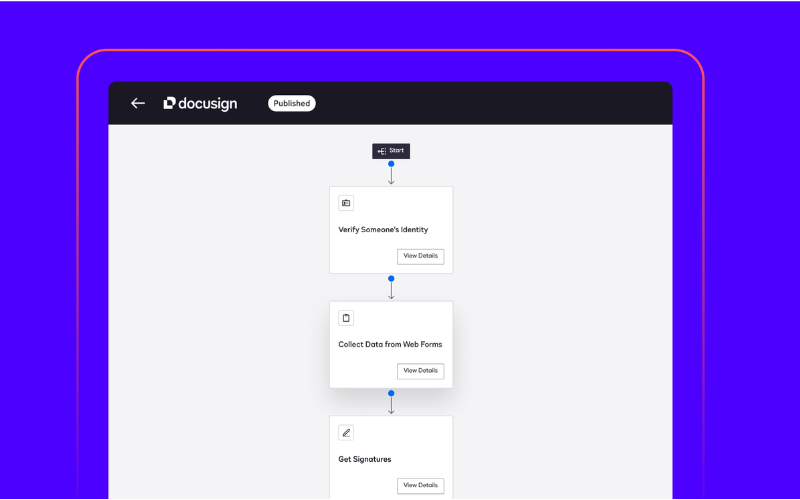
In May 2024, DocuSign introduced a significant update called DocuSign Maestro, aimed at enhancing the functionality of its agreement management platform. This update is particularly focused on improving workflow automation without requiring users to engage in complex coding tasks. DocuSign Maestro allows users to build, deploy, and manage customized workflows that integrate seamlessly with the existing tech stacks of various organizations. This tool is designed to cater to a variety of operational needs, from new account openings to managing non-disclosure agreements and other routine business processes.
DocuSign Maestro functions by providing a user-friendly interface where workflows can be customized and automated according to specific business requirements. It supports a broad range of uses, such as automating the steps involved in document processing and approval sequences, which traditionally require manual intervention. By simplifying the creation and deployment of these processes, Maestro ensures that organizations can set up efficient, reliable workflows quickly and with minimal technical expertise.
The value of DocuSign Maestro to users lies in its ability to significantly reduce the time and effort associated with managing agreement processes. For businesses, this means quicker transaction closures, reduced errors, and enhanced compliance due to more consistent execution of agreement-related tasks. Additionally, by eliminating the need for manual coding, Maestro makes advanced workflow automation accessible to a broader range of users, not just those with technical backgrounds. This democratization of technology can lead to more innovative uses of DocuSign across different levels of an organization, further enhancing productivity and operational efficiency.
Verdict: Hot! Users will certainly benefit from more efficient workflows.
Evisort Update Notes
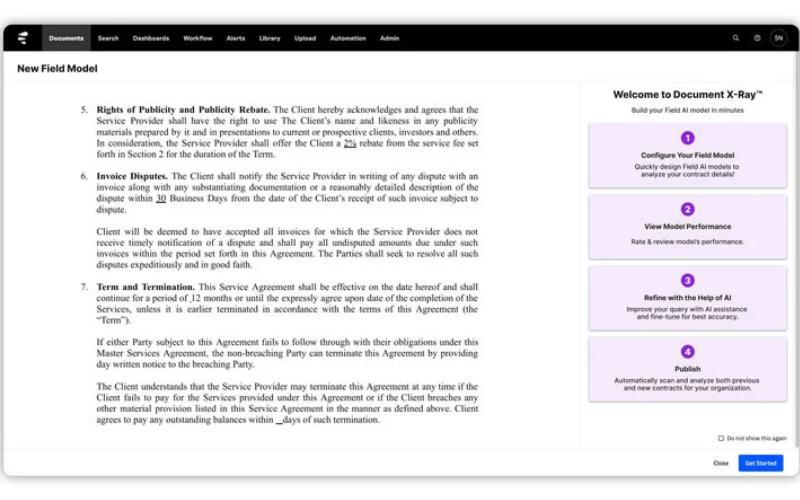
In 2024, Evisort introduced an innovative update to their contract management software called Document X-Ray™. This feature is designed to revolutionize how users interact with and manage their contract documents. Document X-Ray™ automatically scans and analyzes contract content, providing a deep dive into the details and terms that are often missed during manual reviews. This technology aims to uncover hidden information in contracts, making it visible and accessible for better management and decision-making.
The Document X-Ray™ function works by utilizing advanced AI to thoroughly examine each contract uploaded into the Evisort system. It identifies and highlights key elements and clauses, ensuring that nothing is overlooked. This includes scanning for standard and non-standard provisions, obligations, and risks embedded within the text. The tool is capable of processing a wide range of document formats, making it highly versatile for various types of contractual agreements.
For users, the value of Document X-Ray™ lies in its ability to enhance transparency and oversight over their contractual agreements. This tool reduces the risk of non-compliance and contractual oversights by providing a more comprehensive understanding of contract specifics. Organizations can leverage this detailed insight to better manage their contracts, mitigate risks, and make informed decisions based on the most accurate and detailed information available. This update not only saves time and reduces the labor involved in contract review processes but also significantly boosts the overall efficiency of contract management workflows.
Verdict: Hot! Users can better manage their contracts and avoid oversights.
SpotDraft Update Notes
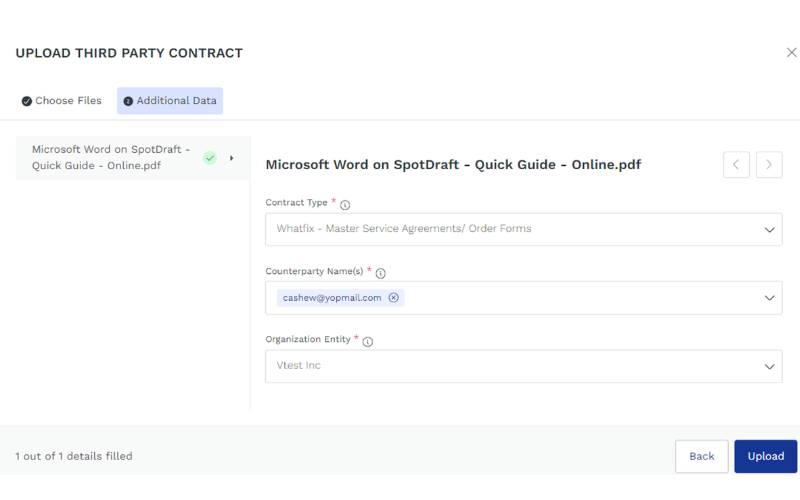
In August 2023, SpotDraft introduced a significant update to their contract management platform, allowing users to convert PDF contracts into DOCX format. This feature was designed to streamline the process of editing and revising contracts by enabling easier modifications directly within SpotDraft. Users can now transform static PDF documents into editable Word documents, facilitating more efficient contract updates and customization.
The functionality of this update is straightforward but impactful: it enables the conversion of PDF files into DOCX format with just a few clicks. This process preserves the original formatting and content while allowing extensive editing capabilities that were not possible with PDFs. After making the necessary edits, users can convert the documents back into PDF format for distribution or signature, or continue to work on them as DOCX files as needed.
The value of this update to users is substantial, especially for legal and contract professionals who need to make frequent updates to documents. It significantly reduces the time and effort required to make contract modifications, eliminates the need for third-party PDF editing tools, and simplifies the revision process. Additionally, this feature supports a more dynamic workflow, enabling quicker turnaround times for contract negotiations and updates, thereby enhancing overall productivity and efficiency in contract management.
Verdict: Hot! This update should be really useful for anyone who wants to modify contracts.
PandaDoc Update Notes

In January 2024, PandaDoc launched an innovative update allowing users to share documents via text (SMS). This new functionality is designed to facilitate faster and more convenient communication by enabling the sending, signing, and management of documents directly through SMS messages. This feature is particularly useful in today's mobile-first world, where business transactions are increasingly handled on the go.
The document sharing via SMS feature works by allowing users to send links to documents through text messages, which recipients can access to view, sign, or provide required information using their mobile devices. This method not only expedites the process of document handling but also enhances accessibility, as it eliminates the need for recipients to access emails or specific apps to interact with the documents.
For users, the value of this update lies in its potential to significantly speed up workflow processes and improve response times. It enables immediate document sharing and signing, which can be crucial for time-sensitive agreements. Moreover, by catering to the growing preference for mobile interaction, PandaDoc's SMS sharing feature helps businesses meet their clients where they are, offering a streamlined user experience that can lead to higher satisfaction and quicker deal closures.
Verdict: Not! Although this update is useful, it may not benefit a lot of users.
Oneflow Update Notes

In February 2024, Oneflow launched a new feature called AI Assist, aimed at enhancing the efficiency and effectiveness of contract management within its platform. This tool integrates artificial intelligence to streamline the process of creating, reviewing, and managing contracts. AI Assist is designed to reduce the time-consuming aspects of contract management by automating repetitive tasks and suggesting content during the contract creation phase.
AI Assist functions by analyzing the context and content of contracts and providing users with intelligent suggestions, such as clause selection and phrasing options. This feature supports users by offering automated guidance that helps in drafting contracts that meet legal requirements while saving time. Additionally, AI Assist can learn from interactions and improve its suggestions over time, adapting to the specific needs and preferences of the organization.
The value of AI Assist to Oneflow users is significant, particularly in enhancing productivity and reducing the potential for errors. By automating parts of the contract creation and management process, businesses can allocate more resources to strategic activities rather than administrative tasks. This not only speeds up the contract lifecycle but also improves accuracy and compliance. AI Assist also helps in maintaining consistency across documents, ensuring that all contracts adhere to company standards and legal requirements.
Verdict: Hot! Users will benefit from more efficient contract creation using AI.
Ironclad Update Notes
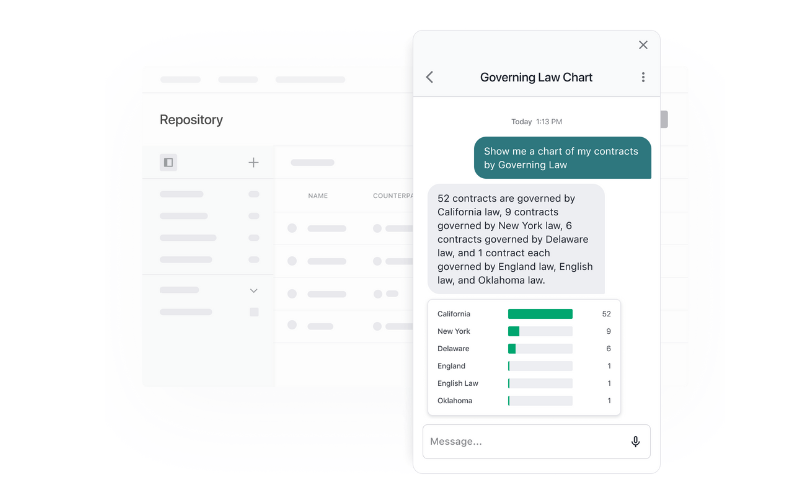
In January 2024, Ironclad introduced a significant enhancement to its digital contracting platform through the integration of advanced AI capabilities. This update focuses on streamlining the contract management process by leveraging AI to train custom clauses and automate complex workflows. The integration with OneTrust is a notable addition, enabling users to manage compliance more effectively within the contract lifecycle by building conditional playbooks based on predefined triggers and conditions.
The AI-powered contract management feature in Ironclad allows for sophisticated automation of contract creation, review, and compliance checks. By training the AI on custom clauses, users can ensure that the contracts generated adhere strictly to company policies and legal requirements. This AI functionality not only speeds up the preparation of contracts but also enhances accuracy by reducing human errors in contract drafting.
For users, the value of this AI-powered contract management tool lies in its potential to significantly decrease the time and effort required to manage contracts while increasing compliance and oversight. Businesses can benefit from faster contract turnaround times, which is critical in fast-paced commercial environments. Additionally, the integration with compliance management systems like OneTrust helps ensure that contracts meet all necessary regulatory standards, providing peace of mind and reducing legal risks. This technological advancement supports Ironclad's commitment to improving contract efficiency and legal conformity across various industries.
Verdict: Hot! The inclusion of AI in contract management will increase efficiency.
5 Must-Know Trends Driving the Future of Contract Management
Contracts might not be the most glamorous part of scaling a SaaS business, but staying ahead of the latest trends in contract management software can save you time, reduce risk, and boost efficiency. Here’s a breakdown of the top innovations reshaping how companies handle contracts—and why they matter for your team.
1. AI and Machine Learning Are Game-Changers
Let’s face it—managing contracts manually is a time-suck and prone to errors. That’s where AI and machine learning step in. These technologies are automating tedious tasks like reviewing contracts, flagging risks, and pulling out critical terms (like expiration dates or renewal clauses). The result? Faster turnaround times and fewer mistakes. Plus, AI-powered tools can even predict potential compliance issues, so you’re not blindsided down the road.
2. Smart Contracts Are Getting Smarter
Ever heard of smart contracts? They’re essentially contracts that execute themselves based on pre-set conditions—no human intervention required. For instance, imagine a vendor payment releasing automatically once goods are delivered. This tech is picking up steam, especially with blockchain making it more secure and transparent. It’s like having a contract that manages itself.
3. Advanced Analytics for Better Decision-Making
Data is king, and contract management is no exception. The latest software comes with built-in analytics to track contract performance, compliance status, and even bottlenecks in your workflow. For example, you can spot which contracts are taking the longest to close or identify recurring risks. These insights help you optimize processes and make smarter, data-driven decisions.
4. Compliance is No Longer Optional
With regulations getting stricter, ensuring compliance has gone from “nice-to-have” to “non-negotiable.” The newest tools make this easier by automating compliance tracking. Whether it’s GDPR, HIPAA, or industry-specific rules, contract management software now comes with features to help you stay on top of it all—without losing sleep over audits.
5. Seamless Integrations are a Must-Have
Contracts don’t live in a vacuum—they touch every part of your business. That’s why modern contract management platforms are focusing on seamless integrations with CRMs like Salesforce, ERPs, and even collaboration tools like Slack. This means no more jumping between systems or losing track of critical updates. Everything flows together, keeping your team aligned and efficient.
This mix of automation, intelligence, and integration is reshaping how we think about contracts. And honestly, the companies hopping on these trends now are going to have a serious competitive edge.
Contract Management Software Frequently Asked Questions
Wondering what else you need to know about contract management? Here are answers to a few common questions.
What are the three stages of contract management?
You can break down the contract management lifecycle in a few different ways, but generally speaking, these are the three stages of the contract process:
- Drafting: Negotiating the terms of the contract among parties.
- Signing: Terms are set and agreed to.
- Management: Terms are enforced and the contract is stored for future reference.
What are the types of contract management software?
Contract management software can be categorized into various types based on functionality, deployment method, and the specific needs they address:
- Cloud-Based Contract Management Software: Hosted on the provider's servers and accessed via the internet.
- On-Premises Contract Management Software: Installed and operated from the organization's own servers.
- Integrated Contract Management Software: Designed to function as part of a larger enterprise resource planning (ERP) system or business process management (BPM) suite.
- Standalone Contract Management Software: Operates independently of other systems, focusing solely on contract management functions.
- Open Source Contract Management Software: Offers source code that users can modify to fit their specific needs.
- Sector-Specific Contract Management Software: Tailored to the unique requirements of specific industries, such as healthcare, construction, or government.
- Contract Lifecycle Management (CLM) Software: Provides comprehensive features covering the entire contract lifecycle from creation, execution, and renewal to expiration.
How does contract management software support contract renewal processes?
Contract management software streamlines the renewal process by:
- Alerting users to upcoming expiration dates
- Automating the initiation of renewal procedures
- Storing contract preferences and terms
How do these systems handle contract disputes or breaches?
Contract management software aids in handling disputes or breaches by maintaining detailed contract histories, communication logs, and compliance records.
Can contract management software integrate with project management tools?
Yes, many contract management solutions are designed to integrate with project management tools, ensuring seamless information flow and coordination between teams. This integration can enhance visibility, enable better resource allocation, and ensure that contractual commitments align with project milestones and deliverables.
What other revenue operations software should I use?
Contracts are just one piece of the bigger picture of your revenue operations, and there is plenty of software out there that can support your sales, marketing, and success teams. Here are a few to consider:
- Marketing Automation Software
- Pricing Software
- Sales Enablement Software
- Customer Relationship Management (CRM) Software
Conclusion
When you introduce a great contract management platform, you’re able to streamline your process from authoring contracts all the way through to signing and securely storing them. It also makes a big difference in the day-to-day experience of employees at your company. Rather than getting bogged down in the busy work, teams can focus on the work that really counts.
Unenforceable contracts? Learn the common reasons why agreements might be void.
To keep up with all of our latest content on Revenue Operations best practices and industry trends, subscribe to our newsletter!






